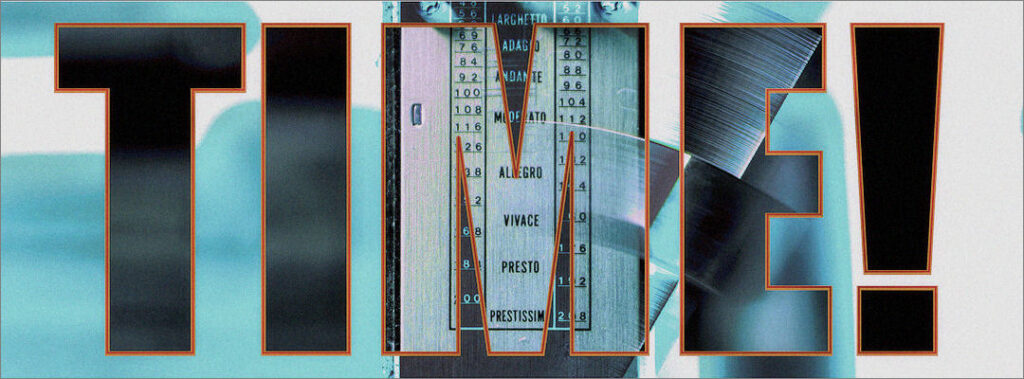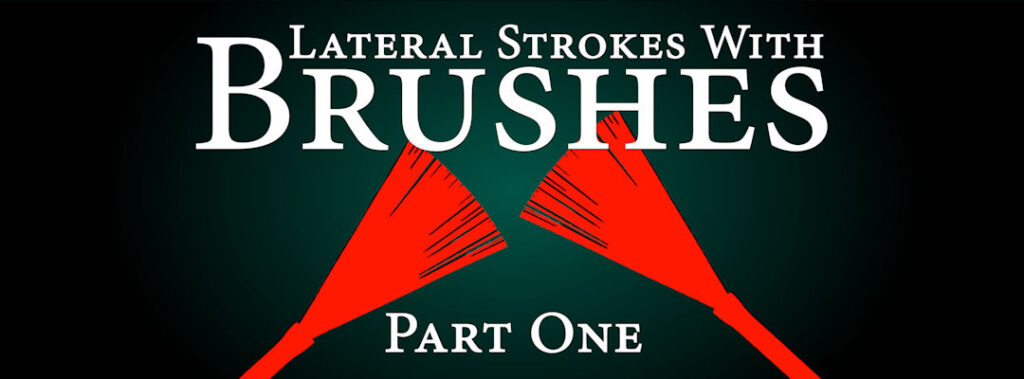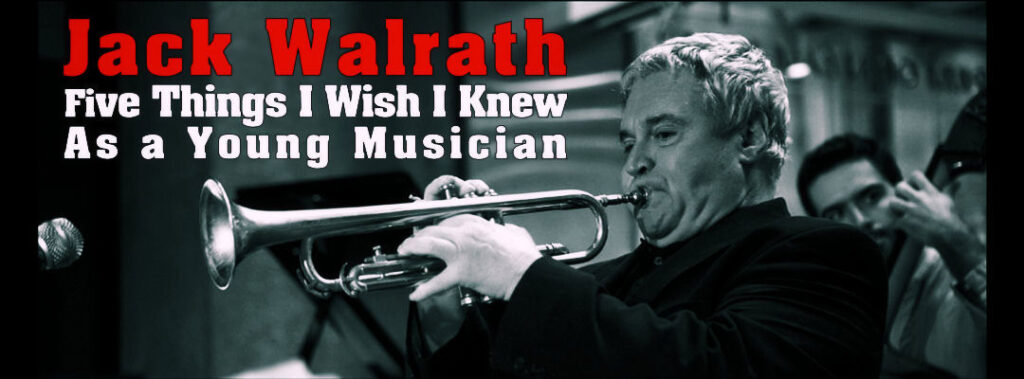(Originally posted on March 1, 2016 in the NYEC blog)
Applications of Long and Short Strokes with Jazz Brushes
In the first installment of this two-part post on jazz brushes I explained how to produce long and short strokes with lateral motions, and I promised that today I would introduce ways to use this technique musically and creatively. Here I am to keep my word and share with you a few ideas.
Before reading further please review part one!
The Rudimental Approach
Now that we have our two sound options under control (and only then!) let’s make things more interesting by mixing them up. Just as with sticks, one way to begin creating a vocabulary with jazz brushes is to practice different applications of the rudiments. The key is to emphasize the characteristics of the brushes rather than imitating stick technique.
A very interesting approach is to perform long strokes on the accents and short strokes on all other notes. The paradiddle is a great example.
RLRR LRLL
When you encounter a double stroke, the hand executing it returns to its original position. Practice all four accents (1, e, &, a) as described in the sheet below. You will notice that the most challenging position for the long strokes is when they are followed by a short stroke played with the same hand. I recommend practicing at very slow tempos at first, in order to fully explore and internalize the motions.
Here is how it sounds and looks like:
Combining Long and Short Strokes to Outline Melodies
Having discovered how to create short rhythmic ideas by mixing up long and short strokes, the next step is to use the same notions to build phrases, or to outline melodies.
Let’s play some swing. Oleo, a famous standard composed by Sonny Rollins, has a nicely syncopated melody that works great as an example. The tune’s form is AABA, 32 bars. The bridge is just time, and the last A section is a repetition of the second A, so we will make this just a 16 bar example (the first two A sections), see image below:
The way we are going to play this is by using long strokes for the melody notes and filling in triplets with short strokes. The image below shows the first two bars as actually played with brushes.
In the video I am playing the first two bars twice at a slower tempo, to illustrate the process. Then I play the whole 16 bars as described above at the same tempo I have been playing all the other exercises in these posts.
Mixing long and short strokes opens the door to many possibilities in terms of expressivity and texture. Brush playing is all about the balance between long, short, legato, staccato and timbre. Brushes allow drummers to not only think rhythmically, but also in terms of density, and actual note duration.
These techniques easily lend themselves as soloing tools, but if you look further you will realize that when they become part of a drummer’s vocabulary they can be applied to time keeping as well, especially in musical contexts open to articulated rhythms, or with broken feels.
While this post focuses on jazz, brushes find their way in many other music styles, and everything that is written here can be used in all of them.
Good luck with your practice!








